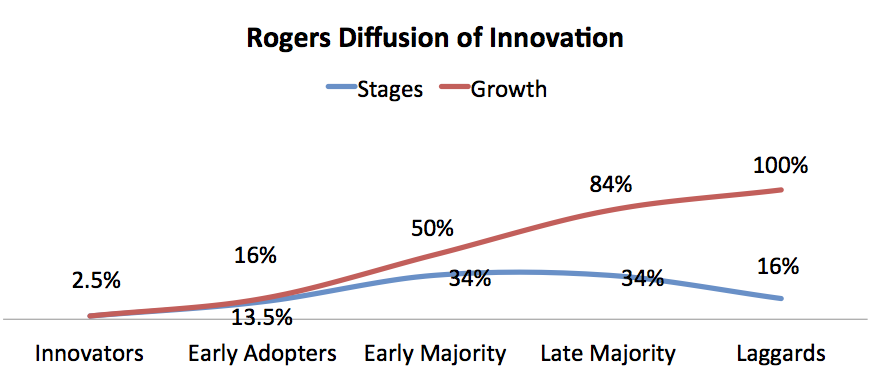On July 8, 2017 the New York Times ran the following headline:
If you are passionate about the future of electric vehicles (EVs), you think a lot about trying to answer this question. In fact, this website is primarily focused on attempting to answer this and similar questions around electric vehicles.
The question about when EVs will go mainstream can be asked multiple ways:
- When will electric vehicles achieve mass adoption?
- When will electric cars go mainstream?
- When will EVs ‘cross the chasm’?
- When will electric cars achieve widespread adoption?
- When will middle America buy EVs?
- When will EVs no longer be purchased just by the wealthy and green consumers?
- When will electric cars be accepted by the mass market?
Whether the question is phrased as or similar to one of the above, what they all lack – at least at the headline level – is any definition and specific metrics to quantify ‘mainstream’ or ‘mass adoption.’
Without an agreed upon metric – specifically percent of new car sales – the auto industry, media and EV forecasters are often referring to completely different points of mass consumer adoption. Or they might be describing the same or similar mass adoption points, yet using completely different terminology.
This is why from day 1, EVAdoption has used the definition for mass adoption of EVs as:
“When electric vehicles (BEV and PHEV) comprise 16% of new auto sales within a specific geographic market.”
The significance of the “16% of sales” metric is that this is when the type of consumers known as the ‘Early Majority’ begin buying a new product.
This 16% target is based on the Rogers Diffusion of Innovation theory, also often referred to as the “Technology Adoption Curve or Life Cycle.” The concept is probably most widely known from Geoffrey Moore’s best-selling business book, “Crossing the Chasm.” Moore described this point in adoption after the ‘Early Adopter” phase as consumers migrate to the ‘Early Majority’ as “crossing the chasm.”

Consumers in the ‘Innovators’ and ‘Early Adopters’ phases are willing to take more risk, accept trade-offs and short-comings and pay more for new products. Consumers in these two adoption groups are often also motivated by ‘conspicuous consumption‘ – letting those around them know that they are an early adopter and have the financial wherewithal to purchase a new product that will clearly come down in the price in the future.
But, the question we are trying to answer is: “When Will Electric Cars Go Mainstream?”
The benchmark the industry uses for determining when electric cars have entered into the phase of mass adoption should be entering into the ‘early majority’ phase of adoption – when EV sales reach 16% of new auto sales.
Below is an excellent definition of the ‘early majority’ segment from Investopedia:
The first sizable segment of a population to adopt an innovative technology. The early majority tends to be roughly 34% of the population, and will adopt a new product after seeing it used successfully by either “innovators” and “early adopters” that they know personally. People in this segment are less affluent and less educated than innovators and early adopters, but are willing to take a chance with a new product.
In our view, the 16% metric is a precise and widely-accepted point at which to demarcate when EVs have started to achieve mass adoption. Going forward I hope that analysts, reporters and prognosticators will use this percentage – or some other clearly defined metric – when declaring the mass adoption of electric vehicles.
 Announcing the acquisition of EVAdoption by Paren →
Announcing the acquisition of EVAdoption by Paren →
